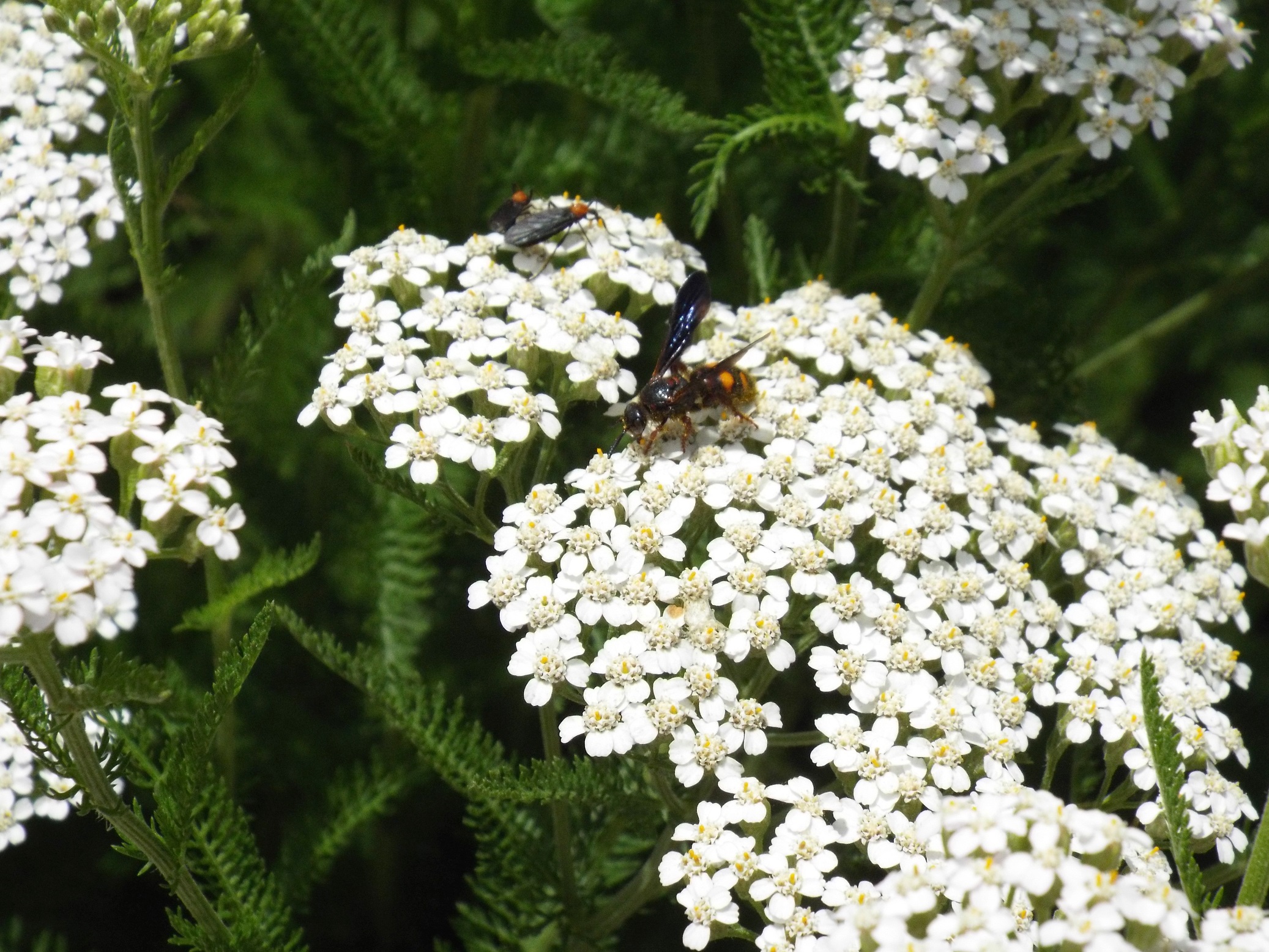
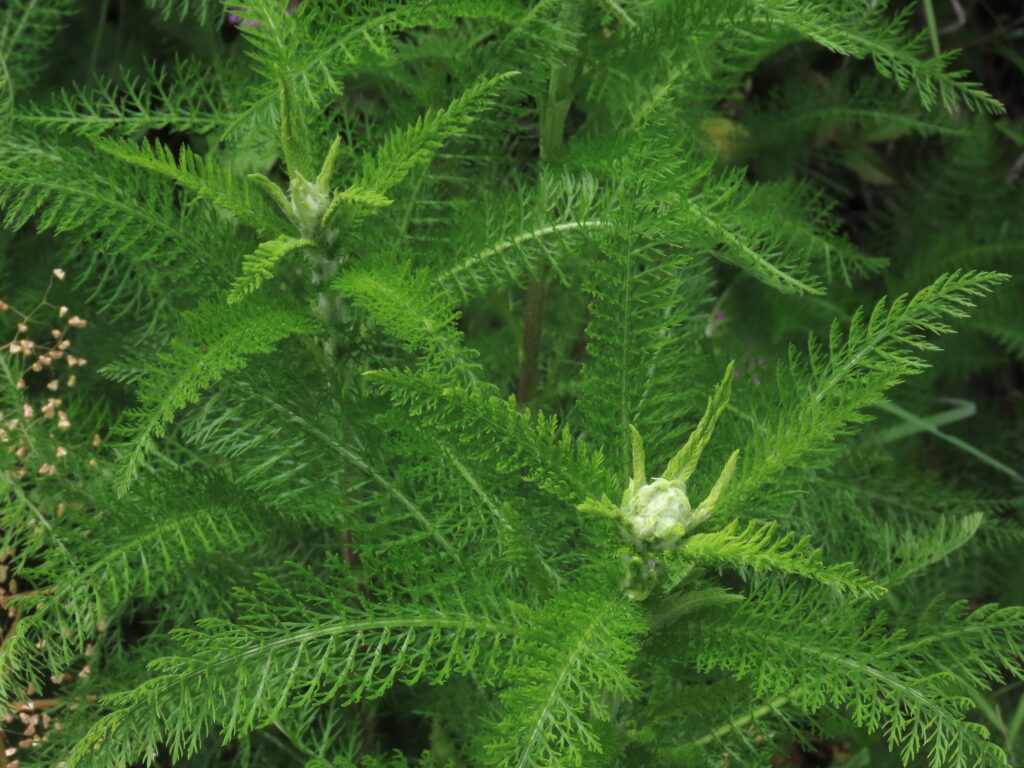
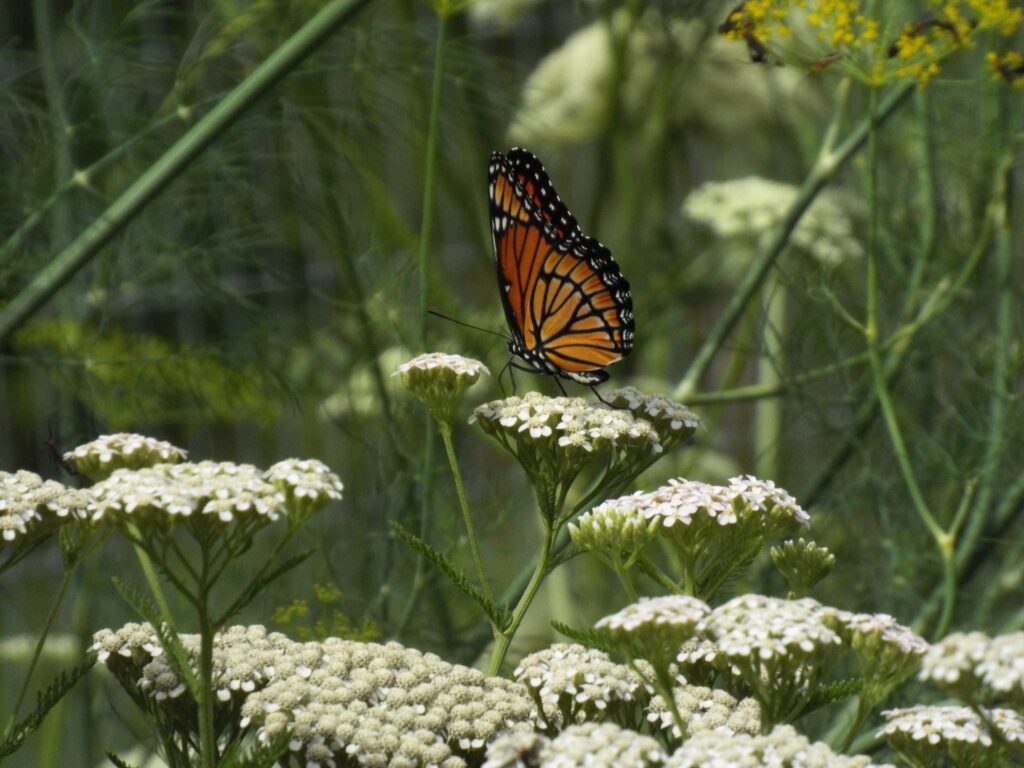
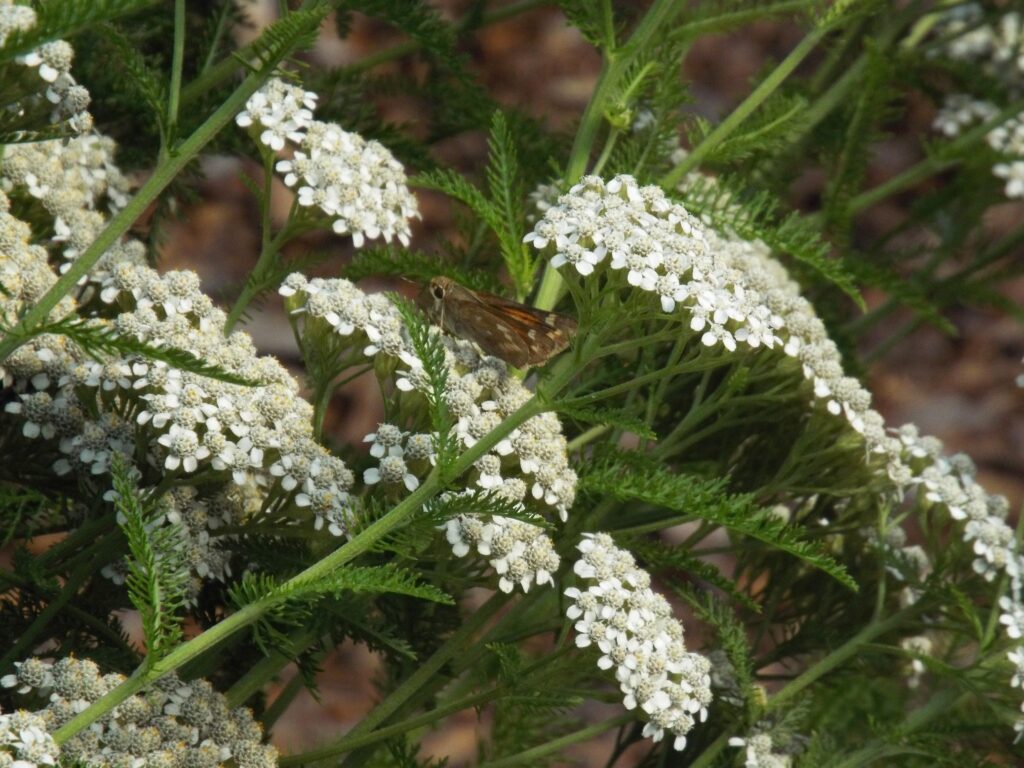
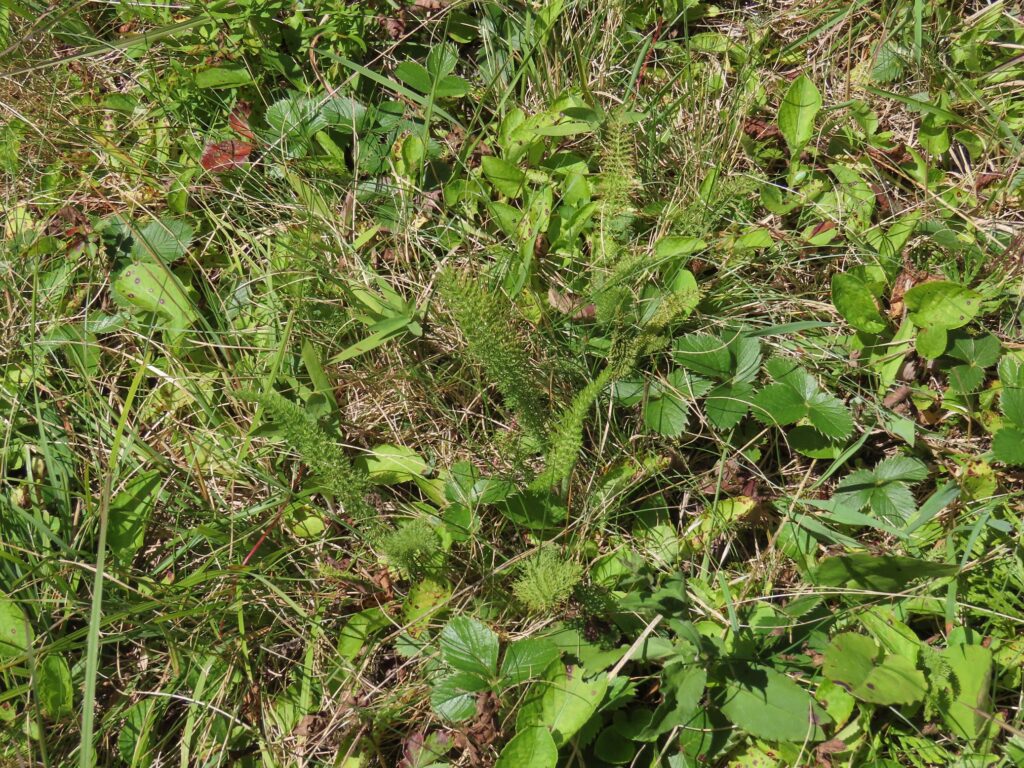
This week for Flora and Fauna Friday we’re hosting a globe-trotting cosmopolitan herb, Common Yarrow (Achillea millefolium).
The genus Achillea, the Yarrows, has well over a hundred species globally within it. Three are found in North America but only one is native and widespread in the United States. Common Yarrow (A. millefolium), or just simply Yarrow, is found in all fifty states and essentially all of South Carolina. It’s not often an easy plant to find out in the wild but it is quite easy to pick out of a crowd when you do. Its feathery leaves, so finely divided to appear as a fluffy green haze, project half-a-foot up through grass and duff in search of light, forming a dense dome of leaves in good conditions. In the frost-free reaches of the Sea Islands, Yarrow even grows as an evergreen, spreading underground through its perennial web of roots into a cluttered groundcover. In early spring stalks rise skyward, plateauing at knee height into an umbel of small white flowers, crowded shoulder to shoulder. These flowers appear in late April through the end of May and are pollinated by all manner of small flies, beetles, and bees. Yarrow is very drought tolerant and hardy. In my opinion, it’s one of the easiest perennial plants to grow in any garden.
Common Yarrow has long been a staple in formal gardens, floral arrangements, herb beds, home remedies, and traditional ethnobotany. The leaves of Yarrow contain astringent compounds, the effects of which have been known since prehistory and have been relied upon by humans ever since. The astringency of Yarrow causes blood vessels to restrict and contract wherever it is applied to the body. This reduces swelling and slows bleeding, helping heal wounds, reduce pain, and break fevers for many minor ailments and injuries. The Greeks used it as a wound dressing in their armies and credited the legendary hero Achilles with discovering its medicinal properties. Fittingly, Yarrow received its genus name “Achillea” from this Greek myth. Yet, the utility of Yarrow was known long before Greece. Yarrow was ancient Ibuprofen, a wonderfully utilitarian plant prescription. This made it an invaluable asset in every culture that encountered the efficacy of Yarrow. Where those peoples subsequently traveled to, they brought Yarrow seeds in tow and sowed them freely around their villages and farms. When those people left or perished, the Yarrow persisted and often prospered.
As you might surmise, this has transformed Common Yarrow into a well-traveled wildflower with quite the tale to tell. From Iberia through Siberia, over the Bering Strait to Alaska and all the way to the Atlantic ranges Common Yarrow. This singular species calls nearly the entire Northern Hemisphere home! Down south it can be found growing freely across South America, Sub-Saharan Africa, and Australia. What brought it here is clear: the hands of man. But from whence it came and when it began to wander around the world, and where it is truly a wild flower, rather than a waif, is far from clear. To call the natural history of Yarrow complex would be a thorough understatement. For tens-of-thousands of years, practically as long as people and Yarrow have occupied the same space, humans have been intentionally collecting, prescribing, planting, and spreading Yarrow across the globe. All the while relict clumps of Common Yarrow have been advancing and adapting themselves to new locales on their own volition. This has created a species-complex like none other, a botanical boogeyman rendering night terrors unto today’s native plant enthusiasts.
A species-complex is exactly what it sounds like. It’s a species that is complicated and defies traditional scientific classification. Yarrow is the definition of a species complex, but cranked up to eleven. There are native, “true” wild-type Yarrow plants on the landscape within its original home range. Trouble is we don’t know where that is or which exact strain is the wild-type, but it is somewhere in Europe, probably. From there we have the species’ many ancient introductions across the northern hemisphere where they have naturally adapted to the unique ecosystems in their new homes. In parallel we have the millennia of heirloom cultivars bred and grown by cultures across the world. Then came the traditional European cultivars, which were spread globally during the renaissance and with colonization to most of the Southern hemisphere for gardens and cattle forage. Then lastly the modern cultivars of Common Yarrow developed in the last hundred or so years with precise artificial selection for horticultural use, again grown globally. All of these different chronological steps for every subspecies, strain, cultivar, and variety now exist simultaneously on the landscape, planted next to each other in fields, farms, and garden beds. Of course, they all hybridize with each other with varying degrees of regularity. Let’s not even mention the further complications of the polyploid plants. This all has created a vast gradient of gray area into which we must wade to answer the question, “Is Common Yarrow native to North America?” The curious case of Yarrow shatters the false dichotomy of the question. It is both exotic and native at the same time in the same place. Each individual plant occupies a space on a spectrum somewhere between either extreme.